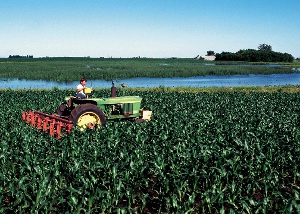5585 Guilford Road • Madison, WI 53711-5801 • 608-273-8080 • Fax 608-273-2021
www.agronomy.org
Twitter | Facebook
NEWS RELEASE
Contact: Hanna Jeske, Associate Director of Marketing and Brand Strategy, 608-268-3972, hjeske@sciencesocieties.org
Corn Silage Hybrids and Seeding Rates
MADISON, WI, AUGUST 11, 2011 -- Recent studies report that corn hybrids released in the late 2000s, especially Bt hybrids, require higher seeding rates than commercial hybrids released in the 1990s to reach maximum yields. Expectedly, corn seeding rates in the USA have increased significantly in the past 10 years. However, limited data is available on silage yield and quality responses of recently released hybrids to seeding rates.

Cornell scientist William Cox investigated the response of eight hybrids (three Bt and a non-Bt hybrid, two brown midrib and two silage specific Bt hybrids) to four seeding rates (25,000, 30,000, 35,000, and 40,000 kernels/acre). The study was conducted in 2008 and 2009 on a silt loam soil in New York. To determine if different hybrid types require different seeding rates for maximum yield and quality, Cox measured leaf area, biomass accumulation, silage yield and silage quality.
All hybrids responded similarly in growth, yield, and quality to seeding rates. Every hybrid had their highest crop growth rates at the 40,000 kernel/acre seeding rate during vegetative development. However, from the silking stage in late July to the early September harvest, the hybrids had similar growth rates each of the four seeding rates. This indicates that the seeding rates should not be increased for Bt hybrids or decreased for midrib hybrids.
Cox, who conducted the study, said that “results from this study should be applicable for corn silage production on silt loam soils in most northern regions of the USA. We did not experience any real drought or heat stress in either year of the study, however, so results should not be extrapolated to droughty soils or regions where temperatures are much higher than those encountered in the this study”.
The complete results of the study were published in the July-August 2011 issue of Agronomy Journal, presented extensively to New York dairy producers at winter workshops, and recently shared with Canadian scientists at the 2011 Plant Canada Meetings in Halifax, Nova Scotia.
###
Agronomy Journal is the flagship journal of the American Society of Agronomy. Articles convey original research in agriculture, natural resources, soil science, crop science, agroclimatology, agronomic modeling, production agriculture, and instrumentation.